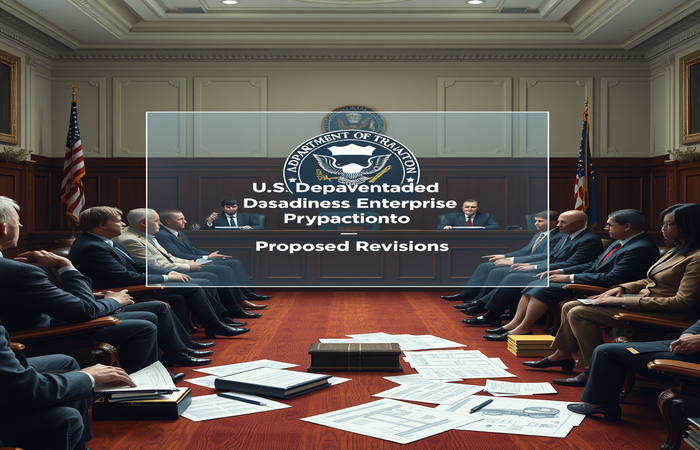Alstom’s €230M Grand Paris Express Line 18: Automating the Future

This article examines the significant contract awarded to Alstom by Société du Grand Paris and Île-de-France Mobilités for the complete signaling and automation system of Line 18 of the Grand Paris Express network. The project, valued at $265.98 million (€230 million), represents a substantial investment in modern, automated metro technology. This undertaking highlights the increasing global trend towards driverless, high-capacity metro systems, emphasizing the critical role of advanced signaling and control systems in optimizing performance, safety, and passenger experience. The successful implementation of this project will serve as a case study for future automated metro deployments, showcasing the integration of various technologies into a cohesive and efficient transport solution. We will analyze the technological components, the overall system integration, and the implications of this project for the future of urban transit in France and beyond. The discussion will delve into the specifics of the chosen technologies, their benefits, and the challenges associated with integrating such a complex system.
Alstom’s Scope of Work: Signaling and Automation Technologies
Alstom’s contract encompasses the delivery and integration of a comprehensive signaling and automation system for Line 18. This includes the crucial Urbalis Fluence automatic train control (ATC) solution, a crucial component enabling driverless operation. The Urbalis Fluence system, based on direct train-to-train communication (CBTC – Communication-Based Train Control), allows for the minimization of headways (the time interval between trains), leading to increased line capacity and operational efficiency. Furthermore, the inclusion of Iconis centralized control systems facilitates automated traffic management, providing operators with advanced control and regulation capabilities. Alstom’s role also extends to the data transmission system, ensuring robust and reliable communication throughout the network. This requires a highly resilient and available network infrastructure, capable of handling large volumes of data required for real-time train control and monitoring.
System Integration and Testing: A Complex Undertaking
Beyond individual technologies, Alstom’s responsibility extends to the seamless integration of all system components. This crucial aspect involves rigorous testing and verification at various levels – from individual sub-assemblies to the entire system. The success of the project hinges on the coordinated effort of various engineering teams, demanding precise planning and execution. This phase of the project involves considerable coordination and collaboration between multiple stakeholders, including Alstom, Société du Grand Paris, Île-de-France Mobilités, and other involved contractors. The comprehensive testing regime is designed to identify and resolve potential issues before the commencement of revenue service, ensuring a smooth and reliable operational start.
Line 18: A Modern Automated Metro Line
Line 18, a 35km long fully automated metro line, will connect Versailles to Orly Airport in approximately 30 minutes. This route represents a significant upgrade to the Parisian transportation network, providing crucial connectivity between two major hubs. The use of advanced signaling and train control systems is key to achieving the ambitious schedule. The 14km of elevated track demonstrates a modern approach to urban rail infrastructure, potentially minimizing disruptions to existing ground-level infrastructure. The adoption of Alstom’s Metropolis metro rolling stock, similar to that used on other lines in the Île-de-France network, guarantees system compatibility and reduces operational complexities. Each train’s capacity of 498 passengers underscores the line’s aim to provide efficient and high-capacity transport.
Financial Aspects and Project Funding
The substantial €230 million investment in Line 18’s signaling and automation system reflects the considerable cost associated with deploying cutting-edge technologies. The joint funding by Société du Grand Paris and Île-de-France Mobilités highlights the importance of this project to the region’s transportation infrastructure development. This financial commitment signifies the political will to modernize the public transport infrastructure and invest in new technologies to improve efficiency and passenger experience. The project’s success will not only improve transportation in the Paris region but also serve as a showcase for future similar projects globally, potentially attracting further investment in this sector.
Conclusions
The Alstom contract for Line 18 of the Grand Paris Express exemplifies the growing adoption of automated metro systems globally. The project showcases the integration of sophisticated technologies such as Urbalis Fluence ATC (Automatic Train Control) based on CBTC (Communication-Based Train Control), Iconis centralized control systems, and robust data transmission networks. The seamless integration of these technologies, along with the comprehensive testing and verification processes, is crucial to the project’s success. The financial investment underscores the commitment to modernizing urban transit infrastructure, promising enhanced efficiency, capacity, and passenger experience. Line 18’s design, with its elevated sections and high-capacity rolling stock, demonstrates a forward-thinking approach to urban planning. The project’s success will not only benefit commuters in the Paris region but will also serve as a model for future automated metro implementations worldwide. Furthermore, the successful completion of this project will significantly impact the development of future automated metro systems, both in France and internationally. The lessons learned from this large-scale implementation of advanced technologies will be invaluable to future projects, informing design, implementation, and operational strategies. Alstom’s role as a general integrator highlights the increasing complexity and interdependency of modern railway systems, requiring sophisticated project management and system integration expertise. Finally, the collaborative funding model demonstrates a strong public commitment to improving urban transportation, emphasizing the importance of large-scale infrastructure investments for economic and social development.

